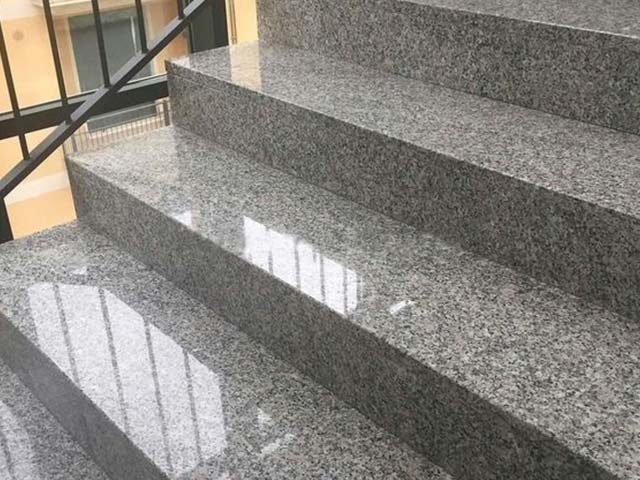In any home improvement project, architects or construction specialists mainly look for two things – beauty and usability. Although both these are of immense value for the property owner, it is also necessary to consider the scientific information of the material. As the use of granite has become increasingly common in both residential and commercial architecture, a question arises among many. Is granite intrusive or extrusive? What are the minerals that cause different colors to the stone?
Introduction
Though understanding a stone’s roots may look needless for a renovation project, it can really make your new project feel even more superior as you understand the years of scientific accidents that joined together to make the beautiful product.
Granite is one of the most popular natural stones available today, due to its beauty and durability. However, very few people know that it also has a very interesting scientific background since it is an igneous rock, resulting from magma. Get to know about granite’s volcanic history along with the aptitudes to classify precise minerals for your granite countertops.

What is Granite?
Granite is largely referred to as a natural stone that is widely used for various applications like flooring wall cladding, countertops, worktops, and others. This stone is known to have a high visual quotient than others and this is what makes this stone so popular.




Being a naturally occurring stone, it is more restricted in terms of looks as compared to artificial stones. Despite this, it comes in a wide variety of colors and designs available to choose from. Everything from white to grey to beige to green can be easily found in granite slabs.
Why Granite is So Popular?
For example, there are more than 200 granite variants that come from India only. Each slab boasts different mineral deposits, with the most usual minerals being feldspar and quartz. Being a natural stone, each granite slab will be unique, so it is necessary for the architects to choose their slab for each project carefully.
Another wonderful thing about granite is that it comes in multiple finishes to choose from. From polished to honed, Lepatora, flamed, brushed, and bush hammered, granite allows architects and construction contractors to choose from a wide range of finishes to meet the surface-related needs of each project.
Granite is also popular for its durable properties. It is resistant to scratches, stains, and heat, making it one of the most performing stones available today. It just needs regular cleaning using soapy water, as well as a sealant which needs to be resealed every six months to a year.
Granite comes from various areas throughout the world, from Italy, India, Brazil, and China, with each region having its own visual features. It is one of the most widely found igneous rocks in the world.

What does intrusive or extrusive refer to?
Igneous rocks are known to take shape in two different ways. In general, igneous rocks are formed by the cooling of lava or magma over millions of years. Magma refers to the molten rock material lying below the earth’s surface, whereas lava is what the molten rock material is termed above the surface. The precise location for the occurrence of this process makes an igneous rock either intrusive or extrusive.
Extrusive rocks are created by the cooling of liquefied magma on the Earth’s crust. This kind of rock is also called volcanic rock. During the extrusive rock development process, magma is taken to the surface via volcanic outbreaks and then hardens to create a rock. These rocks usually have extremely smaller grains or shiny surfaces.

How it happens?
Magma tends to cool more rapidly in an open environment or seawater, which means there is lesser time for large minerals to take shape, thus, the rock usually has very small, hard, lumps of minerals. It can also lead to the development of natural glass. A large figure of extrusive rock is known as extrusion. Extrusive rocks are majorly found in differing border areas. Some samples of extrusive rocks are basalt, pumice, obsidian, and andesite.
Intrusive rocks take shape when magma cools right within the planet’s crust. A figure of this type of rock is known as an intrusion, with several forms having separate names such as dikes, batholiths, laccoliths, sills, and volcanic plugs.
Intrusive igneous rocks are sometimes defined by featuring bigger crystal sizes with separately visible residues. Some experts sub-categorize intrusive rocks into categories given their crystal size: coarse-grained plutonic rock, which features smaller pledges, or medium-grained subvolcanic rock, which boasts bigger deposits. These rocks are usually categorized given the amount of each mineral present in them. This type of rock creates 7% of the Earth’s present land area.
What is granite – intrusive or extrusive?
Granite is termed intrusive and thus created through the cooling of silica-loaded magma within the earth’s crust.
Apparently, granite is a natural intrusive igneous rock as granite slabs have discernibly clear deposits of various minerals. Comparatively, extrusive rocks usually do not feature mineral deposits big enough to be visible. Granite, and other intrusive igneous rocks, generally feature large mineral patterning that results in unique slabs.
Intrusive rocks are extracted using large machinery and sometimes explosives by granite suppliers. There are granite quarries all over the world from India to Italy.
Minerals in Granite
Granite tends to have different types of minerals described below:
Quartz is the most significant component of granite. Its presence ranges from 20% to 60% in terms of volume which is known as real granite. It is a solid, crystalline mineral, and will typically be shown in granite slabs as being transparent or a cloudy white.
Another common mineral is granite is feldspar. It can be of different colors, including gray, white, red, or pink, but most prevalent is off-white opaque shade.
The next mineral is mica. Generally, mica is discovered in the form of muscovite, which is shiny and colorless but may contain traces of brown, green, yellow, or red colors. It is usually only discovered in thin layers, weighted on top of each other.
Amphibole minerals (also known as hornblende) are largely found in granite. They are of green or black color.
Conclusion
Granite is a beautiful and extremely durable stone. Being an intrusive rock, it starts as magma lying deep within the earth, which gets gradually cooled. This rock is extracted all over the world. After discovery and excavation, it is transformed into a slab and dispersed through various granite suppliers.
